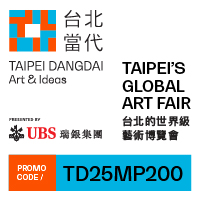West Kowloon Cultural District Says Goodbye to CEO
By Ariana Heffner

CEO of Hong Kong’s
On September 29, Hong Kong’s West Kowloon Cultural District Authority (WKCDA), a statutory body established by the city’s government to develop the West Kowloon art hub, announced that CEO Duncan Pescod will step down eight months before the end of his contract. No reasons were given for Pescod’s departure, which is now scheduled for November 28.
As stated by the press release, WKCDA’s board and Pescod mutually agreed to his exit, and board chairman Henry Tang Ying-yen also commended Pescod’s efforts and dedication in operating the project during his six-year tenure at the organization.
However, according to a report by South China Morning Post, the government was not satisfied with Pescod’s performance, which has been plagued by controversies in recent years such as the WKCD's 2018 firing of the general contractor for M+, the museum of visual culture and contemporary art, and other issues such as the discovery of a sinkhole at a construction site last year.
Global recruitment will begin soon to fill Pescod’s position, while WKCDA says it will seek “secondment from the Government as interim arrangement.” The unsuccessful earlier global search for a CEO in 2014–15 led to Pescod’s promotion from chief operating officer to CEO in 2015. He was later was reappointed for a second term in 2018.
The project has had numerous other senior executives depart before the end of their contracts, such as former executive director of performing arts Louis Yu Kwok-lit in 2019 and former executive director of M+ Lars Nittve in 2016. In 2010, Graham Sheffield, artistic director of London’s Barbican Centre, was appointed the second chief executive, yet he mysteriously resigned within less than a year of his appointment. His predecessor, former Disney executive Angus Cheng Siu-Chuen, resigned within ten days on the job in 2009.
After a decade of local controversy and debate, the WKCDA was established in 2008 with a grant of HKD 21.6 billion (USD 2.78 billion) to turn a large area of reclaimed land at the harbor of West Kowloon into a center of arts and culture. While costs have far exceeded this since, structures such as the performing art venue Xiqu Centre, ArtPark’s waterfront promenade, contemporary performance center Freespace, and exhibition space M+ Pavilion are now open to the public. Staff from M+ will move on site later in the year and welcome guests in 2021. The Hong Kong Palace Museum, associated with Beijing’s Palace Museum, plans to open in 2022.
British-born Pescod has worked in Hong Kong’s public sector for more than 33 years, serving as deputy commissioner for tourism, representative for Hong Kong Economic Trade Affairs to the European Communities, permanent secretary for commerce and economic development, and director of housing. He has not announced his plans for the future.
Ariana Heffner is an editorial intern of ArtAsiaPacific.
To read more of ArtAsiaPacific’s articles, visit our Digital Library.






